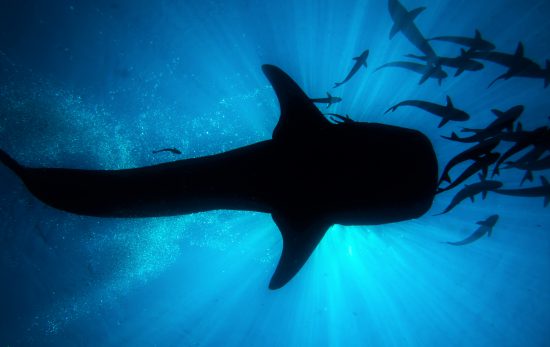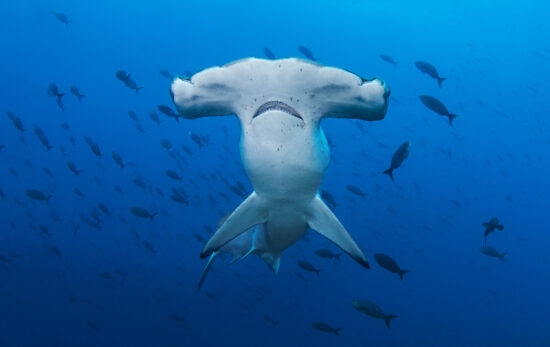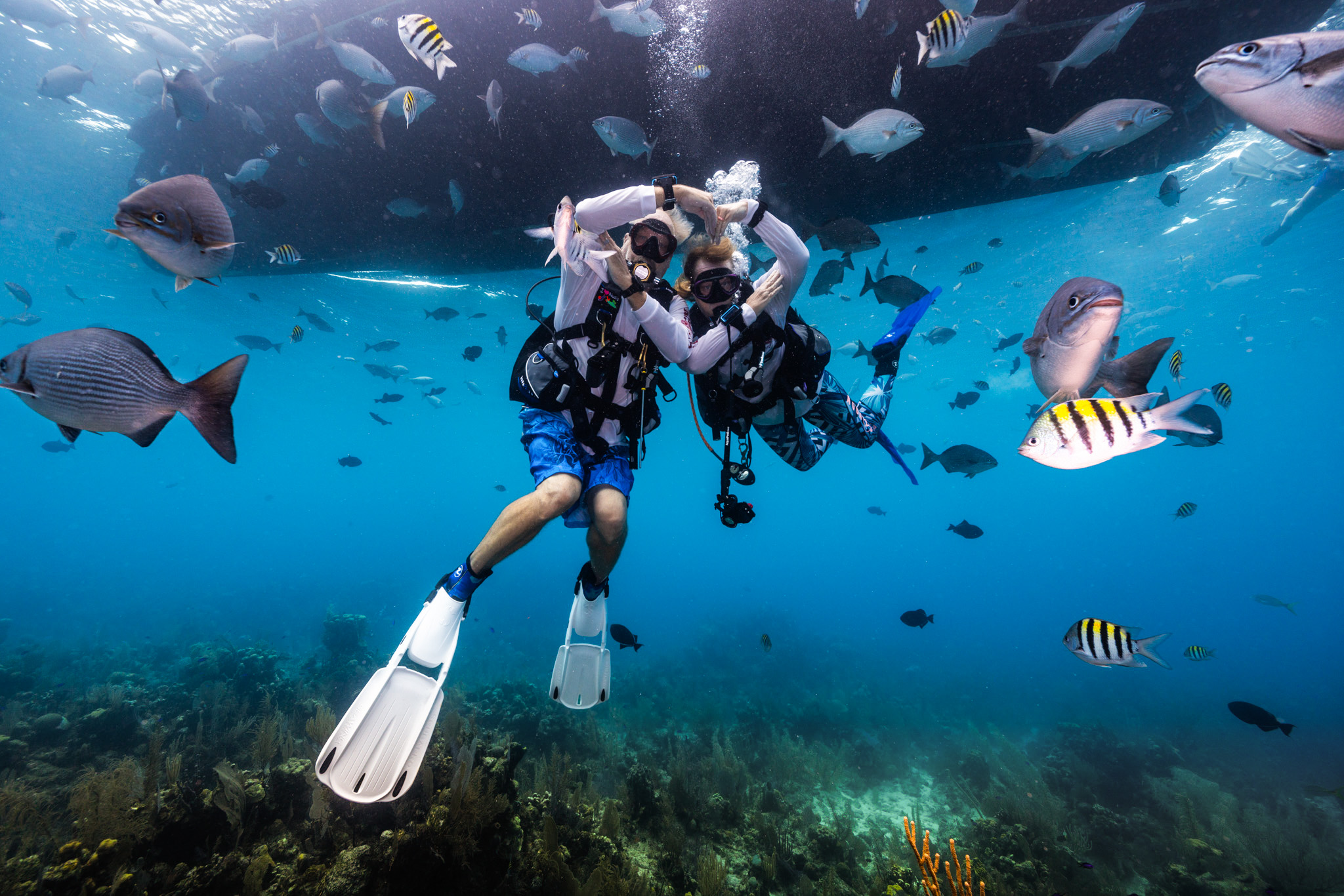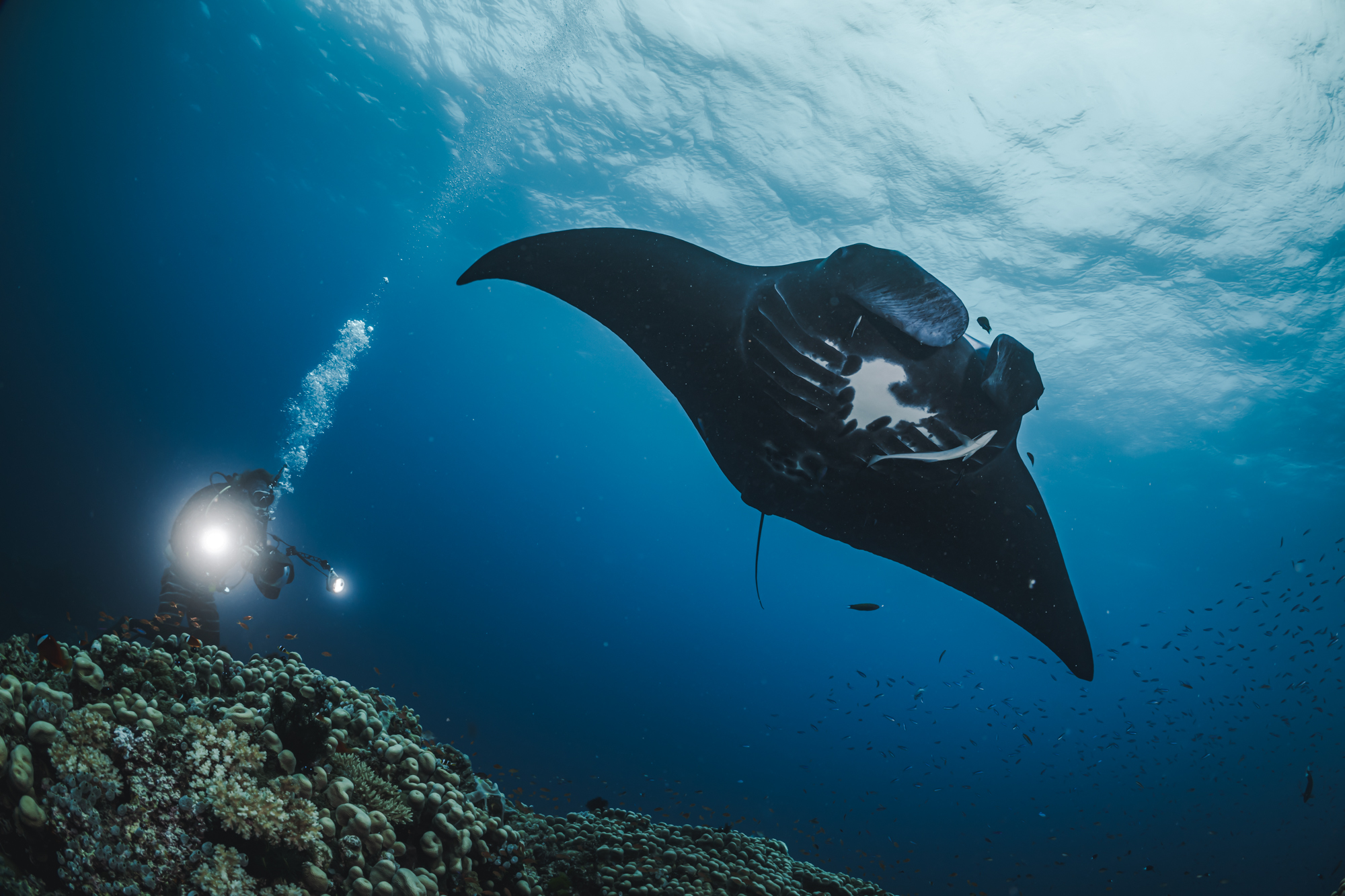Depending on how you classify the different species of dolphins found around the world, there are generally considered to be 42 dolphin species and 7 porpoise species grouped into six families. The oceanic dolphin family is by far the largest, with 38 members. The porpoise family has seven members, and there are four river dolphin families, each containing just one species. The classification of dolphin species is a continuous process. More types of dolphins will likely be added to the list as studies continue and some species become subdivided into different genera.
While we can’t list all types of dolphins here, we have listed some of the most common types of dolphins found worldwide and the best places to see them in the wild.
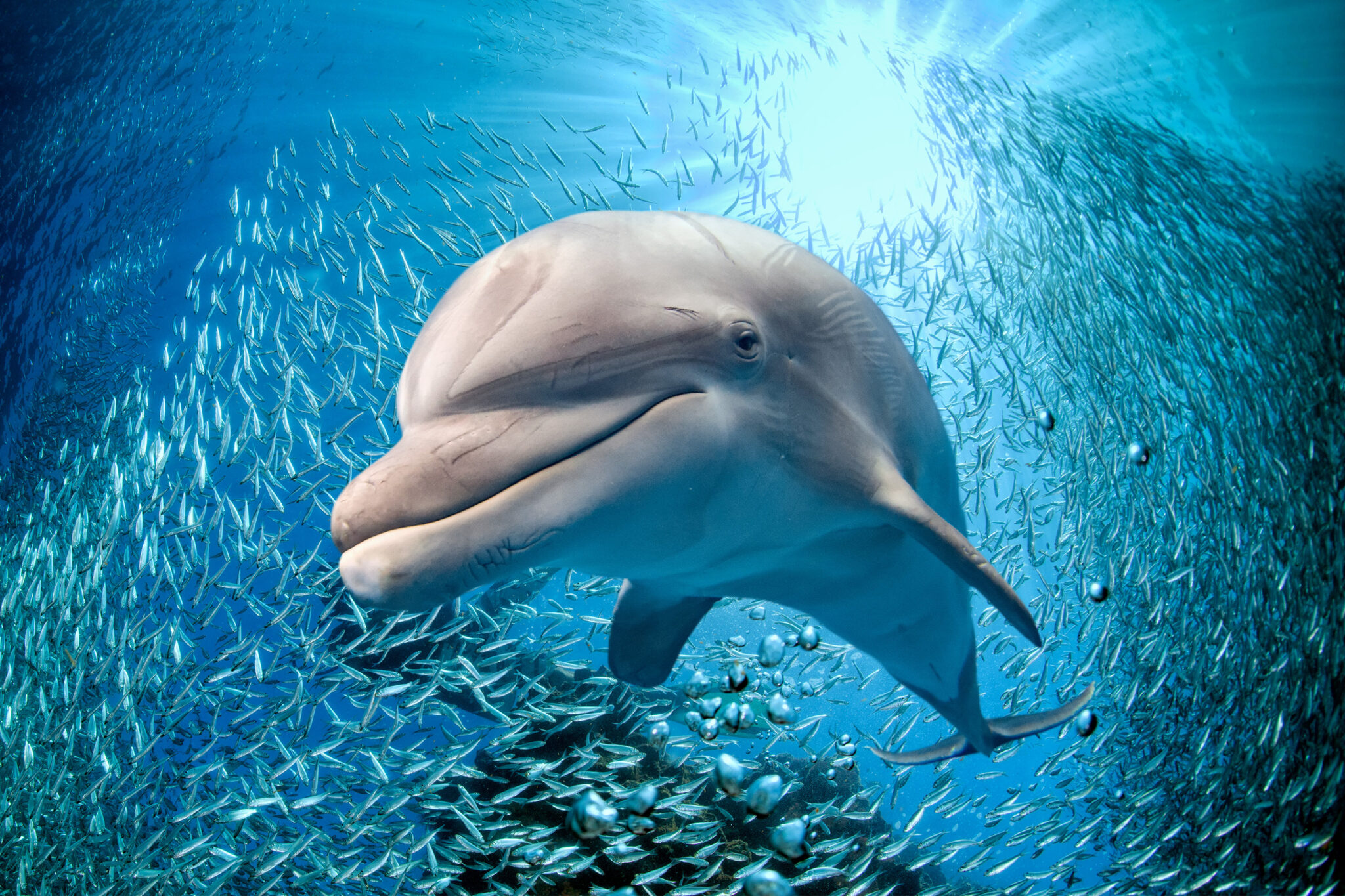
Common Bottlenose Dolphin
We’ve started with the common bottlenose as it is one of the most well-known species, and they are found all over the world in tropical, warm waters. When seen on television, this species can appear deceptively small; however, they grow up to 10-14 feet / 3-4.2 meters.
Southern California is an excellent spot for seeing common bottlenose dolphins in the wild and several other species. Other locations include Galapagos, Cape Town in South Africa, and Hawaii.
Atlantic Spotted Dolphin
This species is most commonly spotted in the Bahamas but is also present in other tropical parts of the Atlantic Ocean. Adults of this species are highly distinctive, with small black spots covering their bodies. The spots develop as the dolphin ages, and calves are a single grey shade without any marks.
Atlantic spotted dolphins are extremely good at holding their breath. Most dolphin species will surface several times per minute. However, this species can hold their breath for up to 10 minutes, allowing them to dive down to depths of up to 200 feet / over 60 meters.

Dusky Dolphins
These dolphins are one of the most active species due to their habits of jumping and diving. Dusky dolphins are smaller, and they live in pods of over 200 individuals.
This dolphin species is found all over the Southern Hemisphere in coastal waters. There are regular sightings and opportunities to see them in South America, Africa, and New Zealand.
Spinner Dolphins
Spinner dolphins are the acrobats of the dolphin realm. This species is known for its impressive displays in which they jump up to 10 feet/3 meters out of the water and spin vertically while mid-air.
Spinner dolphins are a small species measuring up to 6 feet / less than 2 meters and weighing up to just 100 pounds.
Spinner dolphins are found in tropical waters worldwide. Some of the best places to view spinner dolphins include Indonesia, Makako Bay in Hawaii, Egypt, Christmas Island, and Moorea in French Polynesia.

Orca
Despite being known as the “Killer Whale,” orcas are not actually whales. They are the largest species of dolphin in existence. Mature male orcas can grow up to 20-26 feet / 6-8 meters, and they can weigh from 3 to 4 tons.
Orcas are known for their complex social bonds comparable to only those shared by elephants and higher orders of primates and humans! Orca family groups have been known to stay together for generations.
Orcas have one of the broadest geographical distributions of all dolphins, and they are found in every ocean around the globe, from tropical waters to Antarctica. This wide distribution means there are numerous destinations worldwide with excellent opportunities for spotting orcas in the wild. Some of the best areas include:
- Resurrection Bay, Alaska
- Strait of Georgia in Vancouver, Canada
- Monterey Bay, California
- Valdes Peninsula, Argentina
- Olafsvik, Iceland
- Andenes, Norway
- Shiretoko Peninsula, Japan
- Bremer Bay, Western Australia (if you spot whales or dolphins in Australia, report your sightings here)
- Auckland, New Zealand (if you spot orcas in New Zealand, you can help marine conservation efforts by reporting your sighting online).
Read more facts about orcas in this PADI Blog.
Long Beaked Common Dolphin
The common dolphin is the most populous of all dolphins, with over 6 million individuals worldwide.
Originally thought to be two separate species. The Long Beaked and Short Beaked Common Dolphins have now been identified as too similar for different classifications and are now considered part of one united species of Common Dolphin. They are found worldwide in both tropical and temperate climates.
If you are hoping for a common dolphin sighting, the coastline between Santa Barbara and San Diego in the United States is a hotspot. You’ll see several other types of dolphins in this area, too, including bottlenose dolphins, Pacific white-sided dolphins, and Risso’s dolphins.
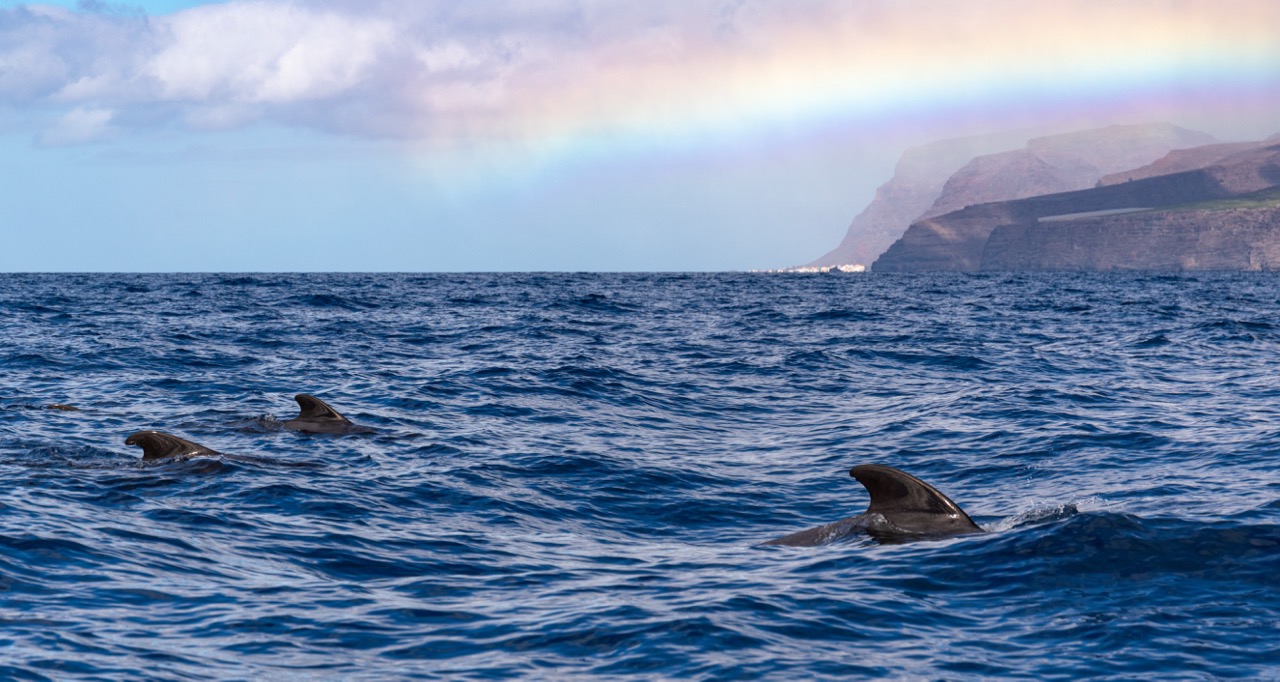
Long-finned Pilot Whale
After orcas, this is the second largest species of dolphin. Long-finned pilot whales can reach over 22 feet in length (approx. 6.5 meters). These are among the more distinctive-looking types of dolphins because of their short snouts and the most extended pectoral fins of any dolphin. They are cold water-dwelling and found primarily close to the poles.
Long-finned pilot whales are incredibly social, so they mix not only with other long-finned pilot whales but also with other types of dolphins. They are known for accepting many species into their pods, including bottlenoses, Atlantic white-sided dolphins, and minke whales.
Striped Dolphin
Due to striped dolphins being one of the most widely spread, combined with their natural curiosity, they are among the most studied of all dolphin species. This species is best known for its fast swimming speeds and distinctive black stripe that circles the eye and runs the entire length of their bodies. The stomach of a striped dolphin can appear blue or even pink – another highly distinctive feature.
If you are hoping to spot a striped dolphin, consider a trip to Europe! There are regular sightings in the Mediterranean and off the Atlantic seaboard of France and the Iberian Peninsula.
Are you ready for some dolphin spotting around the world? Check out PADI dive shops, resorts, and liveaboards in the exact location of your favorite types of dolphins on PADI Travel!

